Tourmalines are one of the most valued jewellery and collector's gems. They are appreciated for their incredibly glassy sheen and a wide range of color shades: from a very rare colorless gem, through pastel shades of pink and peach, intense reds, emerald greens to vivid yellows and deep blues, to black. The color range of this gem is incomparable. In 1989, Heitor Dimas Barbos, who has been looking for exceptional specimens of this mineral in the Paraiba region in Brazil, discovered a new variety that, after being mined, quickly became one of the most desirable gemstones. The new discovery was named after the place of extraction - paraiba tourmaline. It is characterized by a very intense turquoise, even neon color.
That is why tourmaline decorates earrings, necklaces and rings with multiple colors. We choose the colors that appeal to us. At the same time, such a mysterious and exciting mineral as tourmaline is often used as an amulet. It is believed to be a stone of balance, conducive to meditation, relaxation and energy therapy. Tourmaline attracts positive energy and promotes good relationships. It increases the quality of life by strengthening, healing and cleansing - both the body and mind. It helps to fall asleep and dispels feeling of fear. Therefore, jewelry with tourmaline not only beautifully adorns, but affects our well-being.
TYPES OF TURMALINES
Tourmalines have very complex chemical structure. Variable components affect their color and properties. The naming was simplified and the gemstones were grouped according to their color to facilitate communication between gemologists and clients.
ACHROITE - a very rare, colorless variety of tourmaline. To obtain colorless tourmaline, pink tourmalines are often heated. It occurs in Madagascar, Brazil and the USA. Most often decorated with a diamond cut.
RUBELLITE - is a pink-red, red or purple-red variety of tourmaline. It’s often chosen by women because of its properties. It cleanses space and lets you feel piece and joy, and also arouses love. It relaxes. Rubellites are mined mainly in Brazil, Mozambique or Madagascar. Some of the most beautiful specimens are mined in the USA. Beautiful red tourmalines have also been discovered in Myanmar.
PINK TOURMALINE - symbolizes feminine energy, it’s a wonderful gem that supports healing of emotional wounds. Carrying pink tourmaline during the day helps relieve stress, tension, depressive thoughts, and panic. It also calms down too exuberant temperaments, but the gentle and passive ones mobilizes to action. I am also very attracted to this color, which harmonizes beautifully with both gold and silver. I like to use it in my original jewellery.
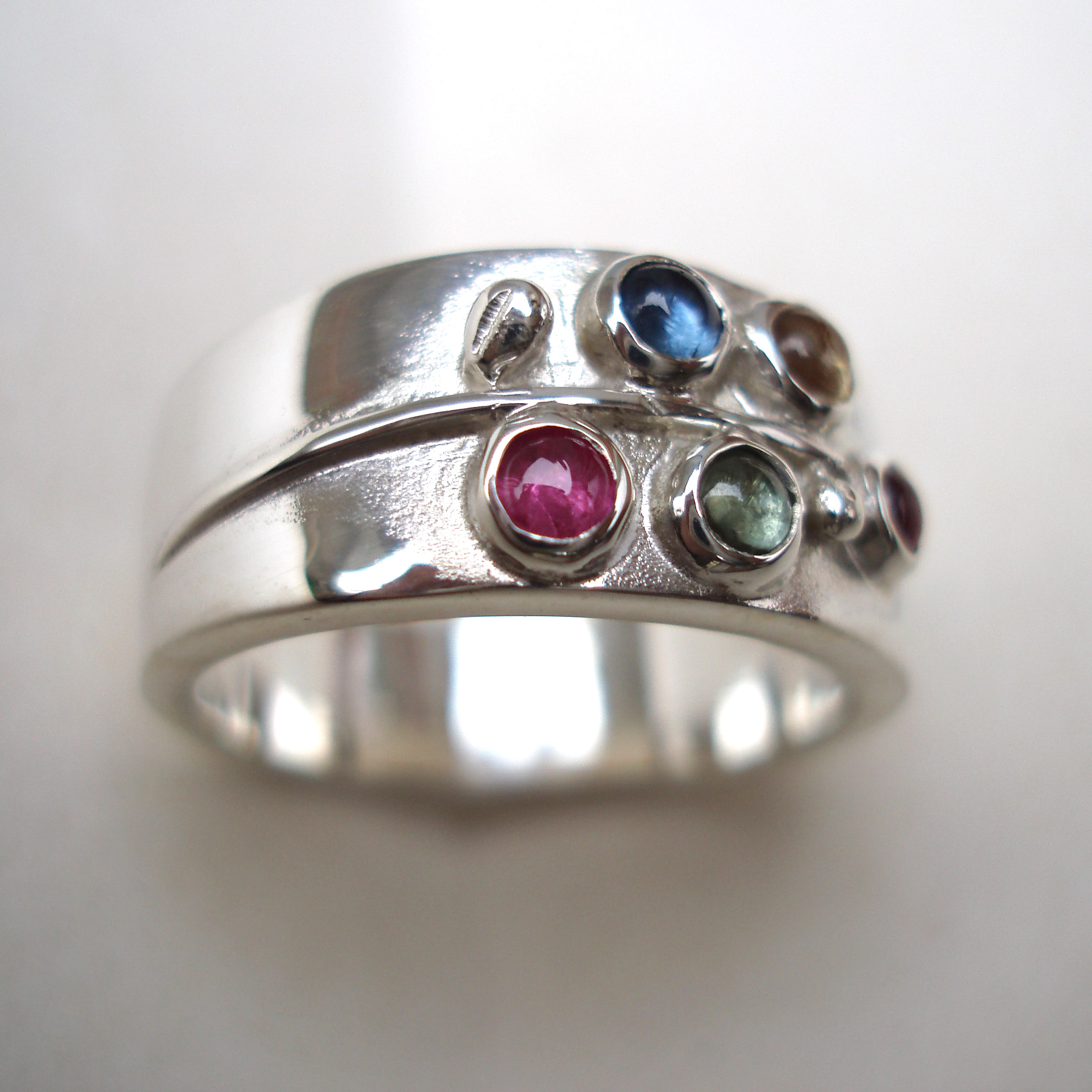
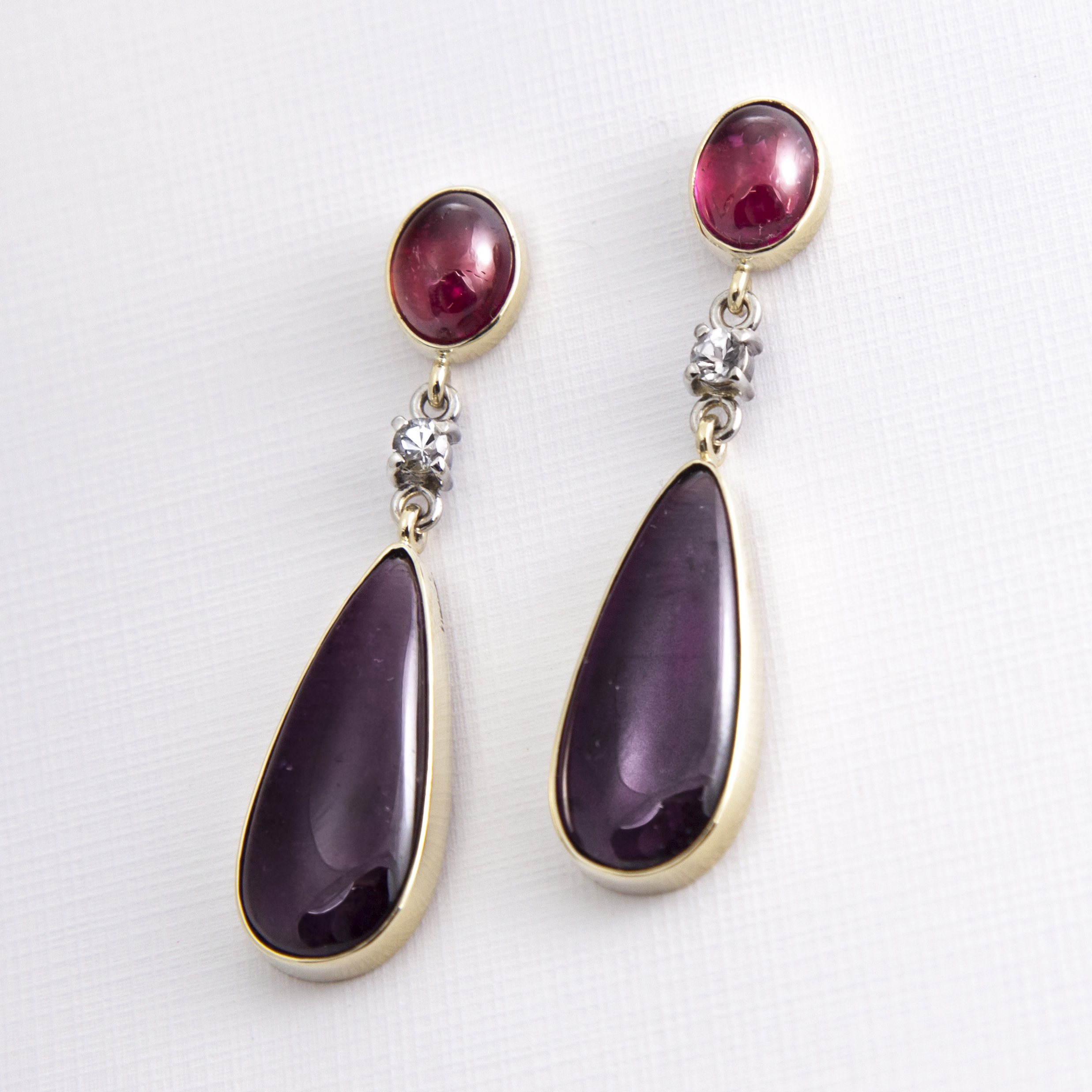
INDICOLITE / Indigolite - blue tourmaline. It harmonizes the work of thyroid gland and strengthens lungs, supports treatment of inflammation of the larynx and pharynx. Its action is said to activate green tourmaline. In order to bring out the color of indicolite and make it brighter, that gem is often heated. It is mainly mined in Russia (Siberia), Madagascar, the USA, and Brazil.
VERDELITE - is a variety of tourmaline in all shades of green. Green tourmaline regenerates tired heart and activates immune system. It also has a rejuvenating effect, normalizes blood pressure, and prevents physical and mental exhaustion. Beautiful and large crystals come from Brazil.
PARAIBA - blue-green, bright blue or green coppery tourmaline. Many people describe this color with adjectives like "electric" or "neon" because it is so saturated and vivid. It is the most expensive variety of tourmaline. Paraiba shines brightly even in a very little light. Purple specimens containing traces of both copper and manganese were also found. In any case, the color of this variety of tourmalines is unusual. It was mined in Brazil because its deposits have probably already been exploited. However, a few years later, after their discovery in Brazil, similar gems were found in Nigeria. However, the name paraiba should be applied to those mined in Brazil.
SYBERITE - lilac to purple-blue. Its name comes from deposits in the Urals.
SCHORL - black variety. Its name comes from the old mining dialect. Black tourmaline is one of those stones that protects and heals on all levels - physical, emotional, mental and spiritual. It helps to treat disorders related to poor adrenal function, as well as arthritis, neuritis, memory impairment and dizziness. It removes negative emotions and energies from human body and protects against external negative influences.
Black tourmaline jewelry - due to its properties, is very often used as a talisman and setted in jewellery. A bracelet with black tourmaline or earrings with black tourmaline are in demand by those who want to help themselves with various difficulties. Natural black tourmaline is the most common tourmaline in nature. Most often used in jewelry in the form of natural crystal straws.
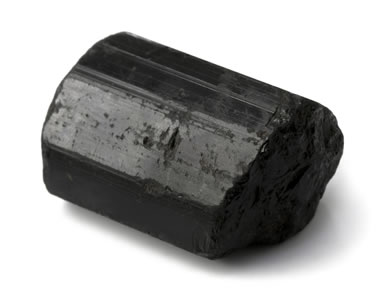
DRAWITE - is a yellow-brown to dark-brown magnesium tourmaline. Its name comes from the Drava River in Austria. The rare ones are blue dravite crystals from China. It’s a gem that is rarely used in jewelry.
WATERMELON - is a multi-colored Tourmaline, showing pink, green and white color zones in the same crystal. The most beautiful specimens of this variety come from the town of Santa Rosa. They are exceptionally beautiful and unique stones.
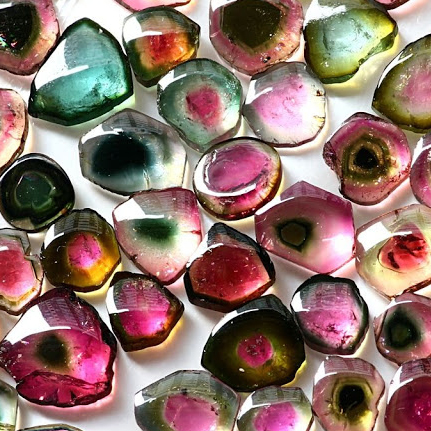
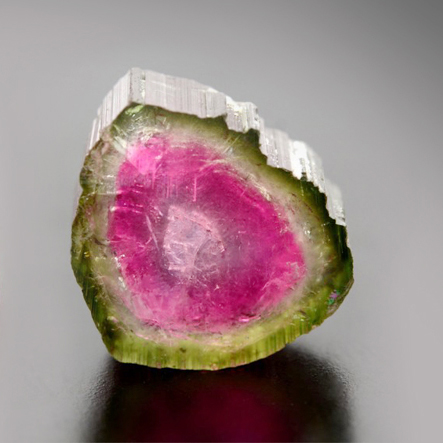
HOW TO IDENTIFY A REAL TURMALINE
Tourmalines officially came to Europe from Sri Lanka in the 18th century thanks to Dutch merchants. Subjected to thorough research by scientists, they were marked as a new mineral and given its name, which comes from the Sinhala language, which is used by one of the ethnic groups living in Sri Lanka. Tourmaline (tura-malí) means "a stone of various mixed colors, attracting ash - this name refers to its piezoelectric properties.
In India, the name thoramalli is also used to mean "covered with dust". You could say that that mixing of colors refers to all the confusion with its classification :)
Tourmalines already reached Europe a few centuries earlier, but people identified them as various gemstones by their color. In the 15th century, one of the Spanish conquistadors found beautiful green stones in Brazil. He considered them as emeralds and sent them to his native country. His mistake was discovered only in the 18th century.
How to identify if it is real tourmaline? - subjecting it to gemological examination. Contemporary mineralogy and composition studies allow for the exact identification of the gem. And so in 1998 the Czech crown of Saint Wenceslas decorated with a large ruby was analyzed. As it turned out, this large gemstone proved to be rubellite. Hence, it can be assumed that one of the oldest rubellites used in jewelry was embedded in the Czech crown. The same misclassification occurred with Russian crown jewels containing a ruby-colored stone.
CHARACTERISTIC
This mineral belongs to the group of silicates with a complex chemical composition. All varieties have common features: they are brittle and have a hardness of 7-7.5 on the Mohs scale. They are transparent and often exhibit such properties as pleochroism, i.e. the phenomenon of color change depending on the angle of incidence of light or the cat's eye effect. They have piezoelectric properties, i.e. they easily electrify, attracting dust, ash and other particles.
They occur in nature most often in the form of crystals with a bar, rod, needle shape. Crystals are usually elongated, vertically furrowed poles with a characteristic cross-section in the shape of rounded triangles. Ends of the crystals come in various forms. Tourmalines break records in length. The largest rubellite (pink-red) in the world was found in the Jonas mine in Minas Gerais, Brazil. It is 109 cm long and is remarkably beautiful. In the same mine, a slightly smaller one called Tarugo (90 cm) was mined. In contrast, schorls (black variety) found in Finland and Norway were made of crystals up to 5 meters long.
The most important tourmaline deposits are in Brazil, in the Virgem da Lapa area. The most beautiful, colorful specimens come from there. The most beautiful stone from this site, measuring 25 x 11 cm, was named "The Flower of Brazil". Many beautiful and valuable stones can be found in Sri Lanka and Afghanistan. They are also mined in Tanzania, Canada, the USA and Madagascar. The well-known deposits of quality gemstones are also found in the Urals of Russia - most often they are blue or red ones. In Europe, specimens from the Elba Island are very famous - that one where Napoleon Bonaparte once spent his 100 days. The name of these specimens comes from the name of this island - "elbaite". However, in Poland, in Lower Silesia, there is the most common - black schorl.
Gemstones for setting are usually cut with plate and stepped cuts, which results in the best extraction of their color. A brilliant cut or rosette cut is also used - I really like to set them in jewellery I create. A smooth cut, i.e. a convex cabochon, can also beautifully bring out their qualities.
HOW TO TAKE CARE OF TURMALINE JEWELLERY
Due to the easy electrification, tourmalines quickly attract fine particles, such as dust. For cleaning, simply use warm soapy water, and after rinsing it thoroughly, wipe it with a soft cloth. As for the most gemstones, ultrasonic or steam cleaning is not recommended for tourmaline as well. It should also not be exposed to sudden changes of temperature. Therefore, jewelery with these gems should be especially cared for.
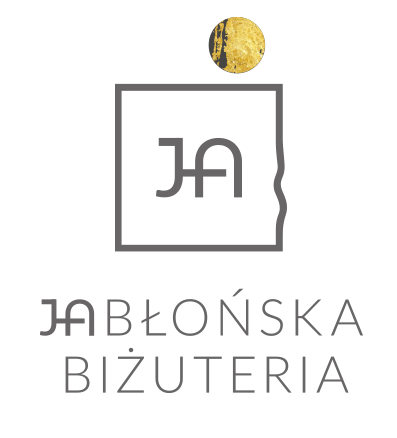







Leave a Reply Cancel Reply